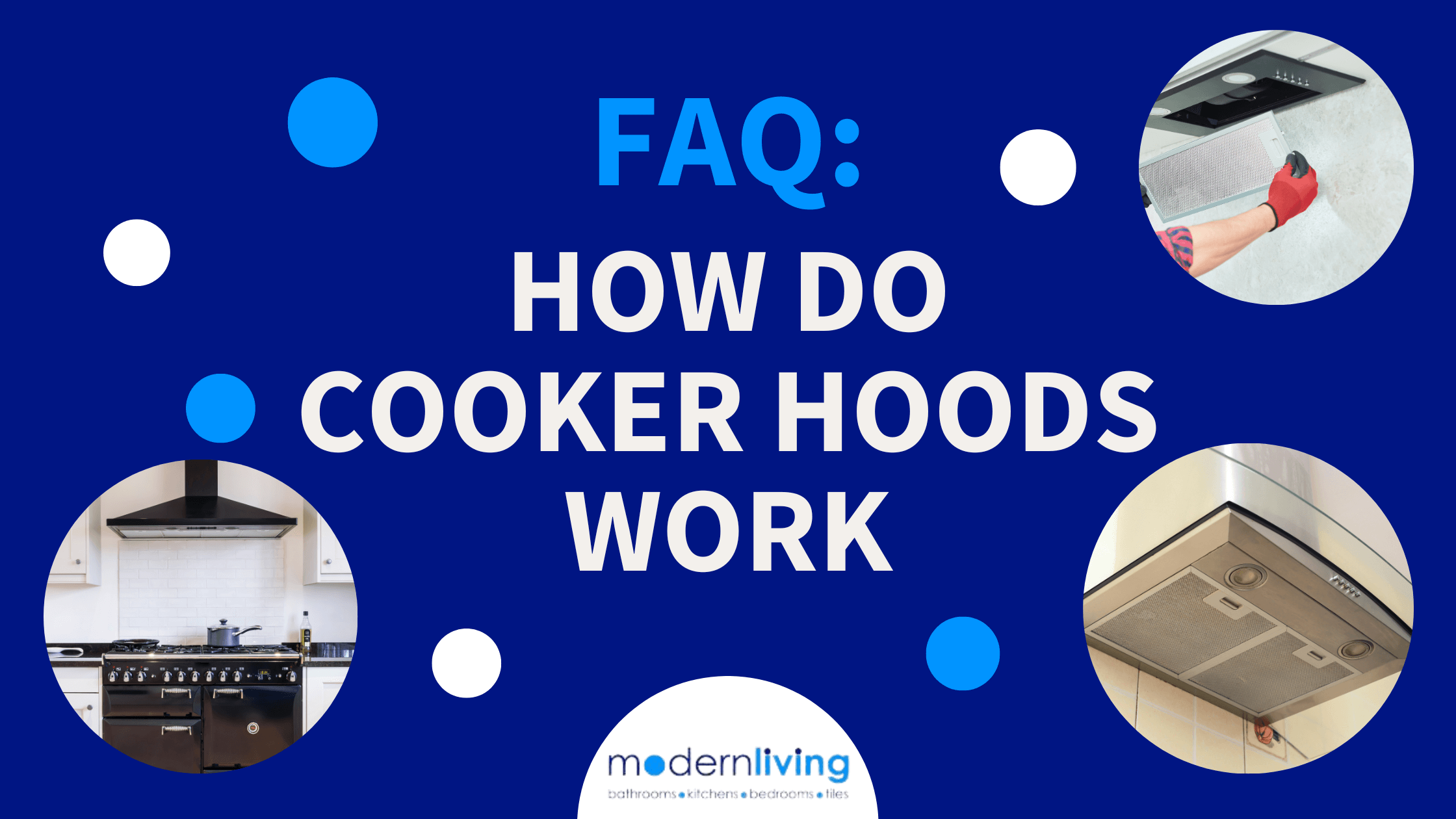No products in the cart.
How Do Cooker Hoods Work?

Cooker hoods work by venting contaminated air outside through ducts or filtering and recirculating the air back into the kitchen. The exact functionality depends on whether the cooker hood is a ducted or recirculating model. Both types use fans and filters to create a vacuum and catch grease particles, smoke, steam and odours. The goal is to extract airborne materials, eliminate lingering odours, and minimise moisture to create a cleaner, more comfortable kitchen environment.
How do Ducted Cooker Hoods Work?
Ducted cooker hoods use powerful fans to create negative pressure (a vacuum) and draw air into a series of filters and a network of ducting. This ensures pollutants, including odour, grease, and hot air, are extracted directly from the source, and protects your kitchen and ducts from contaminant build-up. The air is then expelled outside, continually ensuring the air in your kitchen is clean and dry.
How do Recirculating Cooker Hoods Work?
Like ducted hoods, recirculating cooker hoods use fans to create negative pressure before pulling contaminated air into a dual-filtration system. These filters are made of metal mesh and charcoal or activated carbon to trap large grease particles and neutralise smells in the air. Once the air is clean, it is pushed back into the kitchen. Recirculating cooker hoods don’t use ducting and therefore do not affect the moisture content of the air in your kitchen.
How do Ceiling Cooker Hoods Work?
Ceiling cooker hoods extract air from the kitchen with a powerful motor, creating a vacuum that draws the contaminated air into a series of filters. These filters catch airborne particles and expel the air outside, or back into the room (in the case of recirculated models).
The functionality of a ceiling cooker hood is the same as any other type of hood; the difference is in its installation. The components of a ceiling cooker hood, including the primary unit, motor, and ductwork, are flush-fit to a false ceiling or pre-prepared cavity. This means only the filter panel can be seen.
Ceiling cooker hoods typically include a stronger motor than a standard hood to compensate for their distance from the hob. Traditional cooker hoods are usually placed much closer to the steam, smoke and grease source, but cover a smaller capture radius. Ceiling cooker hoods have a much wider capture zone, because they catch plume and fumes which rise and disperse throughout the room.
Is a Cooker Hood Necessary?
Although it isn’t the law to have a cooker hood, new builds and extensions do require some form of mechanical extraction in the kitchen.
Cooker hoods are highly recommended, and a worthwhile investment for most kitchens. They provide several advantages, including:
- Improved Air Quality: They remove smoke, grease, odours, and steam from the air, keeping your kitchen fresh and free from lingering cooking smells.
- Reduced Moisture: Cooking generates a lot of moisture, which can condense on surfaces and lead to mould growth. Cooker hoods help prevent this by extracting moisture-laden air.
- Protected Surfaces: Grease particles can settle on cabinets, walls, and appliances, making them greasy and difficult to clean. Cooker hoods capture grease before it can spread.
- Fire Safety: In some cases, grease buildup can be a fire hazard. Cooker hoods help reduce grease accumulation, lowering this risk.
- Comfort: A well-ventilated kitchen is simply more pleasant to cook in, especially during hot weather.

Can I install a cooker hood myself?
Installing a cooker hood yourself can be achievable, but it depends on your DIY skills and the complexity of the hood.
If you install a cooker hood, carefully follow the manufacturer’s guidelines. If in doubt, you should always consult an expert. It’s important to ensure that your new appliance is fitted correctly.
How do I clean a cooker hood?
When cleaning your cooker hood, you must handle the appliance carefully. Follow these steps to clean the surface of your cooker hood effectively:
- Select the Right Cleaning Tool: Use a soft, clean sponge or cloth. Avoid using abrasive materials that can leave scratch marks on the surface.
- Apply a Suitable Cleaning Product: Choose a high-quality cleaning product appropriate for your cooker hood’s material. To avoid oversaturation, apply the cleaner to your cloth, not directly onto the hood.
- Clean the Hood Surface: Use the cloth to gently work the cleaning product into the hood’s surface, ensuring you cover all areas evenly.
- Wipe Off the Cleaning Product: Take a clean, separate cloth and wipe off the cleaning product thoroughly, removing any residue.
- Tackle Stubborn Residue: For any tough, stubborn spots, use a toothbrush to gently scrub. The toothbrush bristles can effectively remove the residue without scratching the hood.
By following these steps, you can keep your cooker hood looking clean and functioning efficiently.
Shop Cooker Hoods from Modern Living
Modern Living provides an extensive selection of contemporary cooker hoods, featuring trusted brands such as Hotpoint, Bosch, and Indesit. Our range includes a variety of colours and designs to complement any kitchen decor.
For more information or assistance, feel free to contact our team.
Explore our range online today or visit our showroom to find the ideal cooker hood for your kitchen.


